2024 marks the 10th year I have been sharing our monthly dividend income on this blog. My reason for publishing these regular updates is to keep us honest and accountable. It is also my way to chronicle our financial independence journey and demonstrate that it is possible to build up a sizable dividend portfolio over time.
Despite focusing a lot on the idea of living off dividends, I need to set the record straight with readers – we are hybrid investors. We invest in both dividend growth stocks and index ETFs. We also invest in some growth stocks like Google and Amazon, albeit a relatively small 5% of our investment portfolio value. While stable dividends are nice, total return is far more important. We like to have a mix of both stable dividends and steady portfolio value growth.
Why? Because aiming for total return will provide you with more options in the long term. Relying on dividends is great but having the ability to sell shares to supplement income and reduce potential income tax pitfalls is a far better solution.
Now, it’s easy to compare Bell and Apple today and say that it is a no-brainer to invest in Apple and ignore a dividend growth stock like Bell completely.
But hindsight is always 20/20.
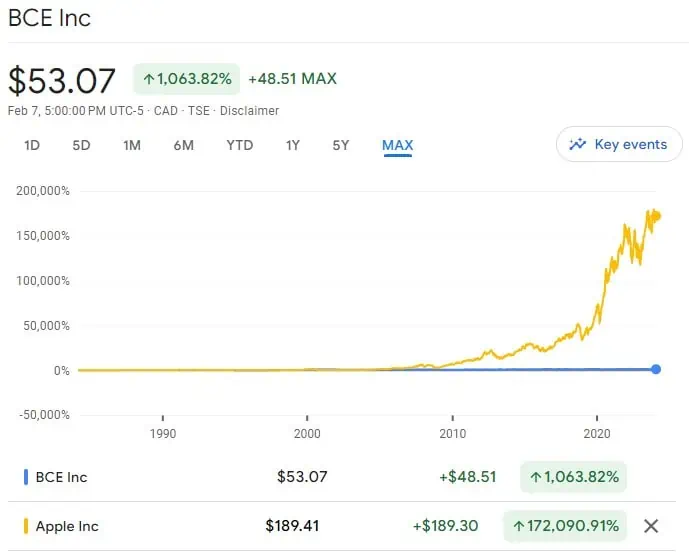
Let’s also not forget that not every “growth” stock will continue to grow and perform over time. Some can easily flame out and crash. For every Apple or Meta stock out there, there are probably more than a dozen stocks that shared their fifteen minutes of fame and then crashed miserably.
Take Peloton and Paypal for example…
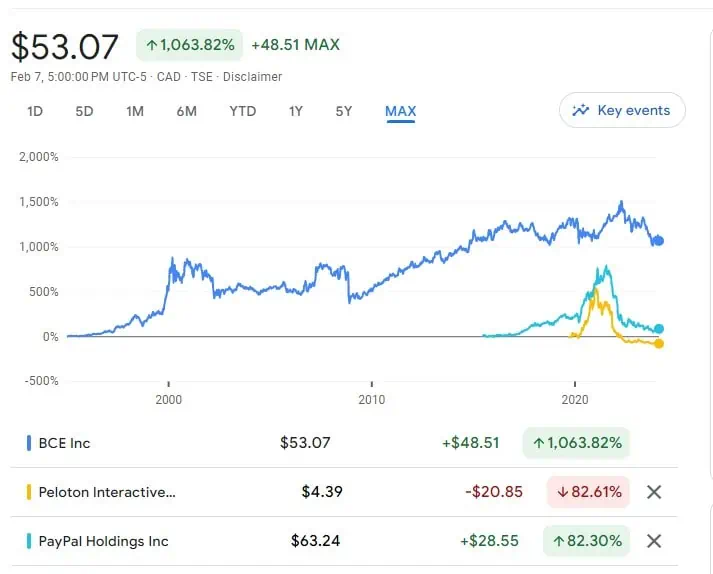
Yup, it’s not as black and white as chasing the next big name and ignoring the stable dividend payers.
I’ll admit that the BCE price performance, not including dividends, has been pretty poor over the last five years. But with a dividend yield of around 5%, it makes BCE a decent bond proxy.
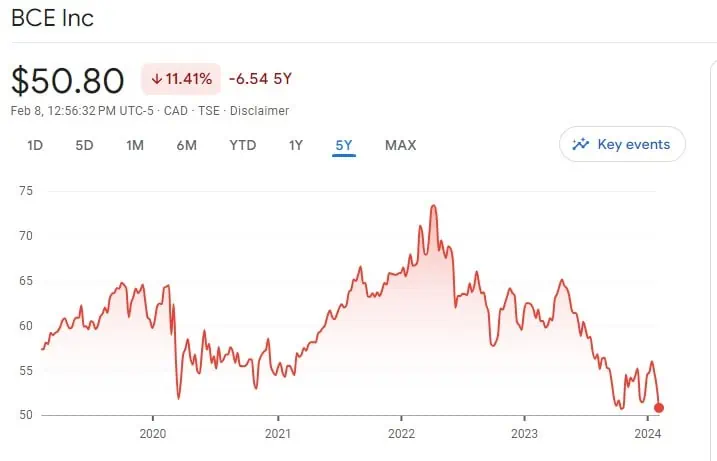
It’s easy to pick winning stocks when you look backward, but it’s nearly impossible to pick winners with certainty when looking forward.
We also need to remember dividends are never guaranteed. Companies could reduce dividend payouts or even stop completely when they face financial troubles or economic downturns. Having said that, if a company has been raising dividends for a long time, there’s a higher probability that the company will continue doing so in order to reward the shareholders.
In the end, is dividend investing the best approach? Or is it index ETF investing? Or a combination of both? Well, I can’t answer that question for you…because personal finance is… personal!
What I can tell you is that after learning and reading about investing, we ended up as hybrid investors, because this strategy suits us very well.
Life-wise, January 2024 flew by in the blink of an eye.
In early January, while mixing bread dough with our KitchenAid stand mixer, Mrs. T told me that the mixer arm stopped spinning. At first, we didn’t put too much thought into this incident.
A few weeks later, we tried to use the stand mixer to make some sausages and the mixer just wouldn’t spin at all. The motor worked but the arm would get stuck when there was a slight resistance. We ended up borrowing another stand mixer from a neighbour to make sausages.


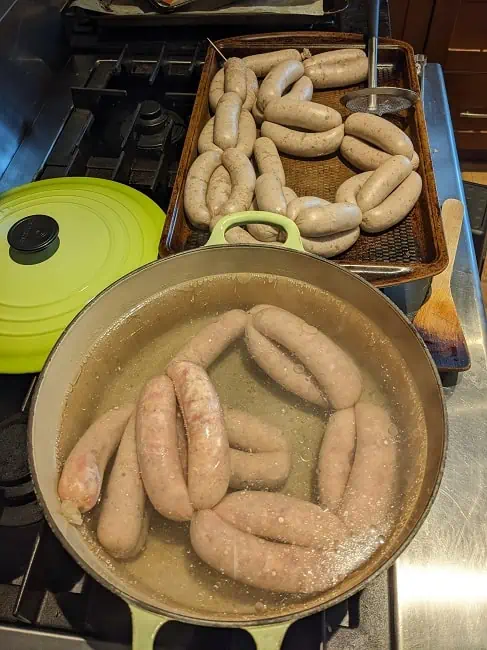
I contacted the KitchenAid help desk and was told that our stand mixer was out of warranty (not a surprise as it was almost 13 years old – one of our wedding gifts). The agent claimed that these stand mixers typically only lasted about five years (a very short time frame for such expensive machines if you ask me). The agent then told me that if we were to order a new one, we’d get a 25% discount.
Not wanting to spend over $500 on a brand new KitchenAid stand mixer, I googled and searched around for a potential solution. I discovered that many people have experienced the same problem and it was caused by a worn-down gear.
After watching several YouTube tutorials, I figured I could easily replace the stand gear myself by getting some new parts. I placed an order on Amazon for the necessary parts and received them a few days later. Then I got to work.
First, with the help of both kids, we removed the stand mixer cover and then exposed the greasy mechanical parts.
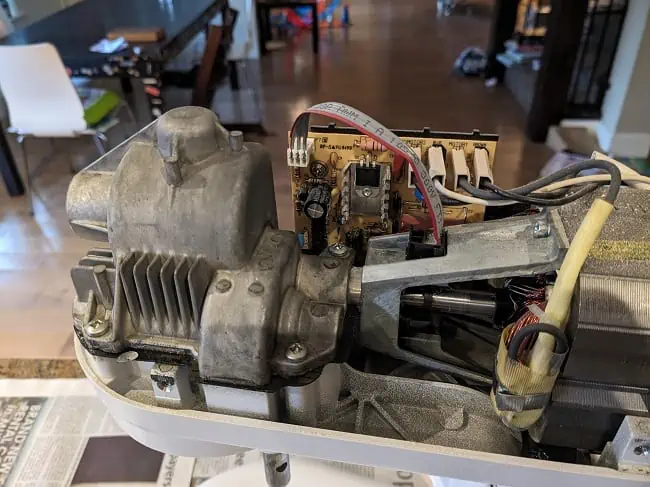
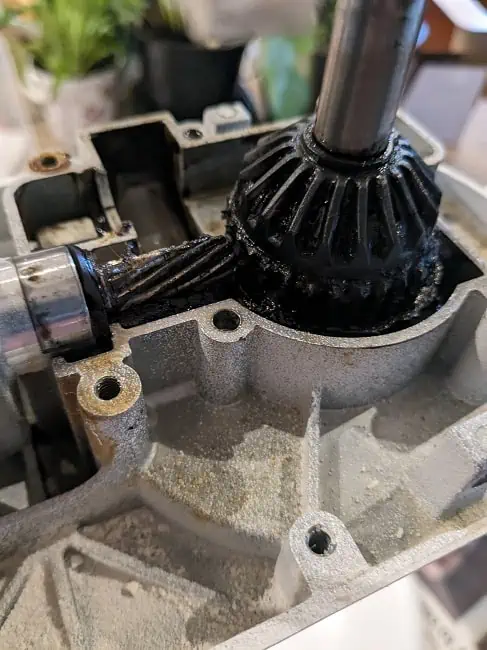
As you can see from the picture below, the worm follow gear was completely worn out after years of usage. It made sense why the mixer arm would spin when there was no resistance but when there was a slight resistance, the mixer arm would get stuck (because the teeth of the gear wouldn’t catch on).
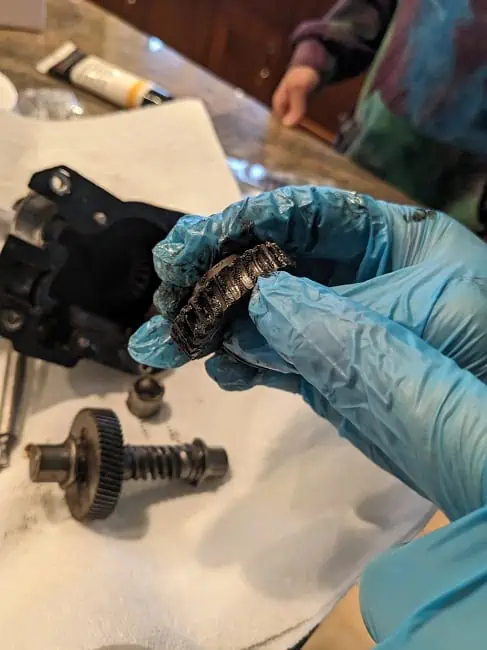
$20 and about 30 minutes of greasy work was all it took to fix the stand mixer. We successfully avoided the need to buy a new $500 machine! More importantly, it’d be really wasteful and not environmentally friendly to have to throw out or recycle our stand mixer.
In mid January I spent a week down in San Diego for a leadership training workshop with about 20 other co-workers from around the world. Given my old company was acquired about a year ago, it was nice for me to meet and network with co-workers from other business units within the company.
One night during a group dinner, one of the co-workers from Europe that I just met at the workshop asked me if I knew about FIRE. I was a little taken aback by his question but without hesitation, I replied yes. Turned out he came across this blog through one of the podcasts I appeared on in the past.
What a small world eh?
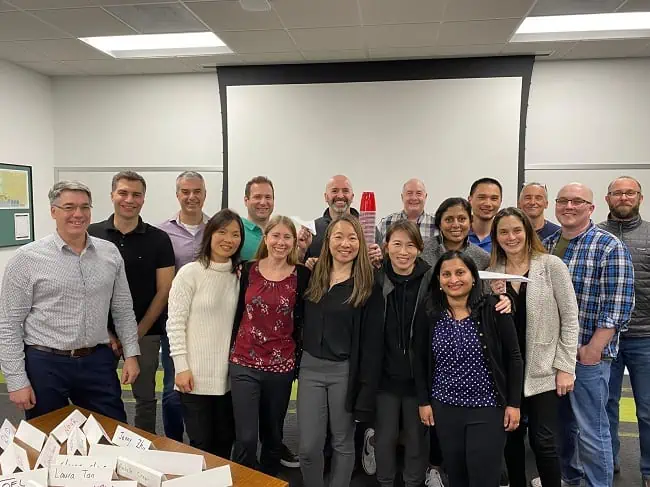
Group shot at the end of the workshop. A few people were missing in this picture.
The leadership training workshop was quite amazing and I learned a lot. I also met our CEO, CFO, and a couple of the SVPs on the senior leadership team.
Since quite a few of my ex-coworkers lived in San Diego, a few of us caught up with these ex-coworkers over dinner one night at California English by Richard Blais, a runner-up at Top Chef. The food was amazing!

While in San Diego we had a dump of snow in Vancouver. Mrs. T and the kids had to shovel the driveway. The kids also made many snowmen.



Unfortunately – or fortunately, depending on your point of view – when I returned at the end of the week, most of the snow was gone.
Keeping up with the fixing stuff theme… Over the last six months or so, we noticed there would often be a pool of water and a sheet of ice underneath the crisper drawer of our Samsung refrigerator. After cleaning out the ice and water just before Christmas, we noticed there was a pool of water and a sheet of ice again in January.
Not wanting to get a new fridge and spend over $2,000, I decided to look for help online. After some online research, I learned this was a known and common issue with Samsung Twin Cooler refrigerators (we inherited the fridge from the previous owner when we bought our house. Never buy a Samsung fridge…note to self).
The problem? The OEM Samsung clip drain evaporator is pure junk. It wouldn’t defrost the ice build up and drain the water properly.
Luckily the fix was very easy with a new $15 drain clip. We had to clean out the fridge, open up the back cooling panel, replace the original clip with the new one, and put everything back together.
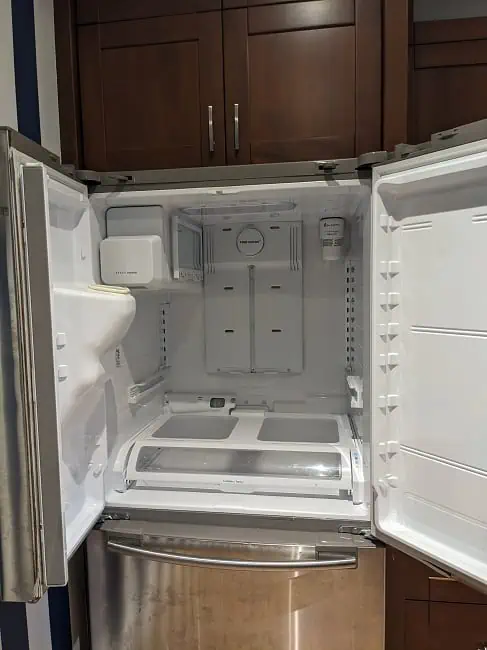
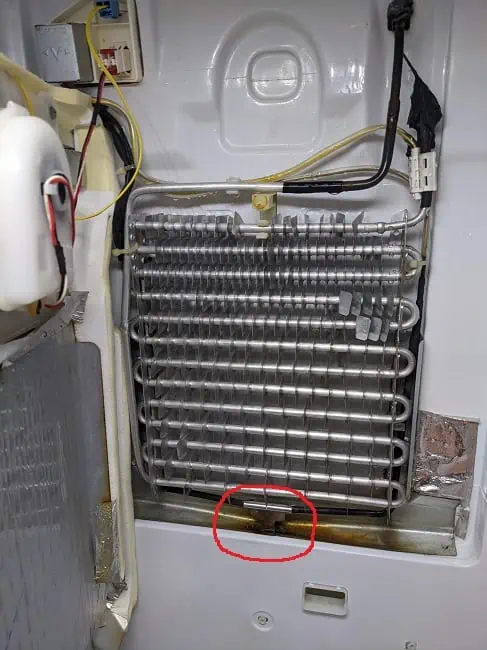
This fixing exercise also gave us the chance to deep clean the fridge. The fix seemed to be working so far so we were happy to not have to buy a new fridge.
Being an engineer by training, I have to say that this drain part in the Samsung refrigerator is quite poorly designed.
Dividend Income – January 2024
Phew, enough fixing up stuff pictures, back to dividend income.
In January, we received dividend income from the following companies:
- BCE (BCE.TO)
- Bank of Nova Scotia (BNS.TO)
- CIBC (CM.TO)
- Canadian Natural Resources (CNQ.TO)
- Costco (COST)
- Capital Power Corp (CPX.TO)
- Granite REIT (GRT.UN)
- PepsiCo (PEP)
- SmartCentres REIT (SRU.UN)
- Telus (T.TO)
- TD (TD.TO)
- TC Energy Corp (TRP.TO)
- VICI Properties (VICI)
- Wal-Mart (WMT)
- iShares Ex Canada Global ETF (XAW)
Dividend cheques from these 15 companies added up to $7,050.48. Wow, a new monthly dividend income record!
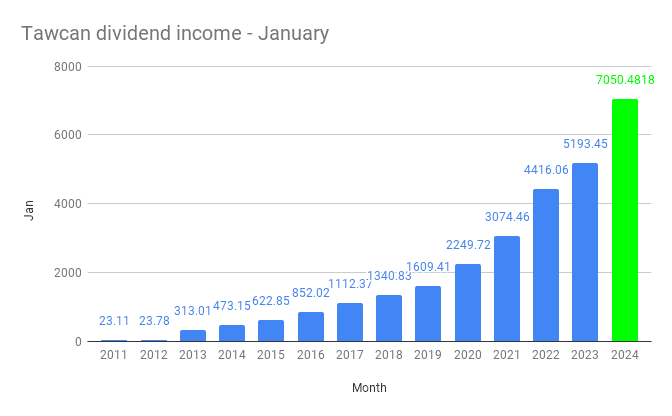
It blew my mind to see our January dividend income going from $2,000 in 2020, $3,000 in 2021, $4,000 in 2022, $5,000 in 2023, then breaking the trend to $7,000 in 2024.
Compared to January 2023 we saw a YoY growth of 35.76%. This was one of the highest YoY growth numbers we have seen in the last few years. Despite an impressive number, I don’t believe it is likely to repeat this year.
As mentioned in the December 2023 dividend report, we are keeping the math simple and avoiding doing any currency conversion between USD and CAD. Moving forward, I won’t provide the USD dividend and CAD dividend breakdown.
Dividend Hikes
In January, the following companies announced dividend hikes:
- BlackRock (BLK) raised its dividend payout by 2% to $5.10 per share.
- Canadian National Railway (CNR.TO) raised its dividend payout by 7% to $0.845 per share.
Only two hikes in January but that’s better than nothing at all. These dividend hikes increased our forward annual dividend income by $43.56.
Dividend Reinvestment Plans (DRIP)
Long time readers will remember that we try to enroll in dividend reinvestment plans whenever we’re eligible. This is our way to put our investments on auto-pilot and dollar cost average over time.
Thanks to DRIP we were able to add the following shares automatically, without having to lift a finger.
- 16 shares of BCE
- 11 shares of Bank of Nova Scotia
- 13 shares of CIBC
- 1 share of Canadian Natural Resources
- 2 shares of Capital Power Corp
- 6 shares of SmartCentres REIT
- 24 shares of Telus
- 12 shares of TD
- 11 shares of TC Energy Corp
- 2 shares of VICI Properties
- 18 shares of XAW
We added 116 shares in January and added $316.96 to our forward annual dividend income. I was very surprised that we managed to drip over 100 shares.
Dividend Transactions
Typically January is very busy for us in terms of purchases. With new TFSA and RRSP contribution rooms, we were able to move a lot of new cash into these registered accounts and purchase dividend-paying stocks and index ETFs.
Since one of our annual goals is to reduce the number of individual holdings to 40, we decided to close out two positions – Metro and Suncor. Both of these holdings were relatively small positions in our portfolio. Metro didn’t perform all that well in 2023 as it bounced around $70. Although Suncor has done well since the pandemic, I didn’t like the cyclical nature of crude oil. Overall, we felt it was better to close out these two positions and re-invest our money elsewhere.
With new contributions and money from closing out Metro and Suncor, we purchased the following:
- 70 shares of National Bank
- 93 shares of Alimentation Couche-Tard
- 30 shares of QQQ ETF
We decided to add QQQ to our portfolio because the Nasdaq-100 index has performed quite well compared to other indices.
Yes, I haven’t written about QQQ but I have been considering purchasing some shares for many years. Considering we now have a sizable dividend income, I feel it’s totally fine to put more emphasis on diversification and potentially higher total returns than dividend yield.
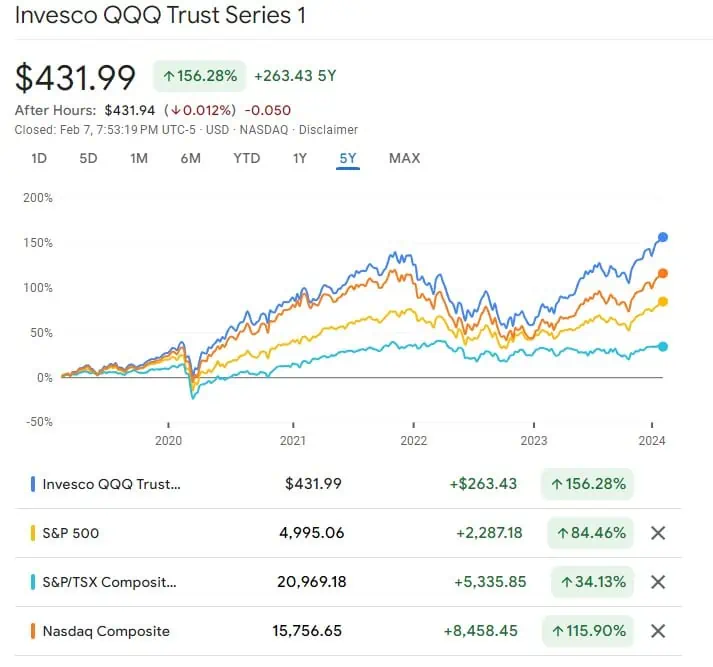
Mark at My Own Advisor and I share a very similar investment philosophy. Mark had a great article on his thoughts on QQQ.
All these transactions resulted in a net of about $270 in forward annual dividend income for us.
Dividend Scorecard – January 2024
Here’s our dividend scorecard for January:
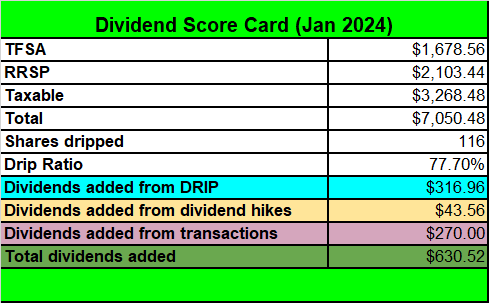
Not only did we have a record dividend income month, but we also added over $600 in forward annual dividend income. A solid month!
Random thoughts on the market
Year to date, the stock market has been a bit volatile. The NASDAQ leads the way with a +7% return while the TSX trails behind at +0.16% return. The performance has been lacklustre to say the least.
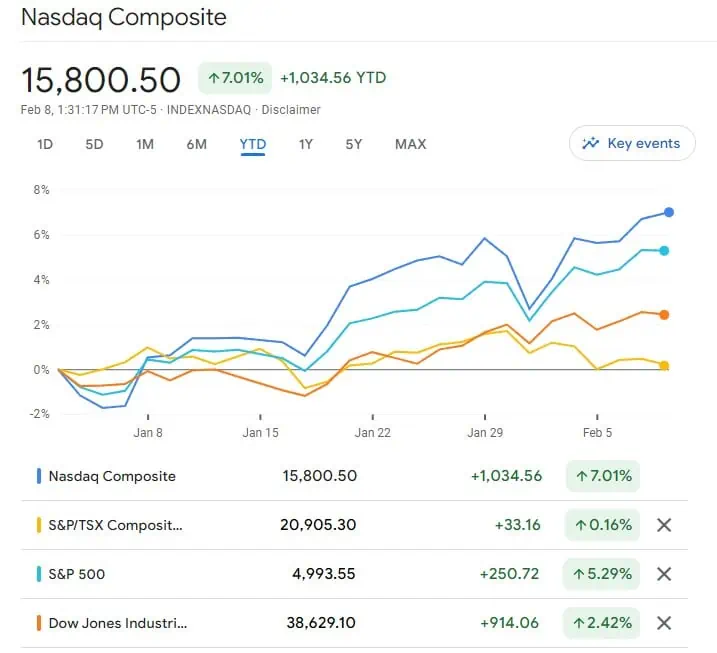
But let’s not forget that’s exactly what happened last year. The market bounced around for months, then went on a tear in the latter part of October.
For those investors who think that they should wait on the sidelines and only invest when there’s a clear bull market… timing the market is a fool’s game. I have said endless times on this blog over the years – time in the market is far more important. Investing regularly and dollar cost average over time is a very simple and proven strategy.
Some dividend investors may believe that they can get better gains by doing so called dividend capture strategy. For those that aren’t familiar with the strategy, it is used by inventors to capitalize on dividend payments. Investors would buy shares of a company just before the ex-dividend date and then sell the shares on or after the ex-dividend date.
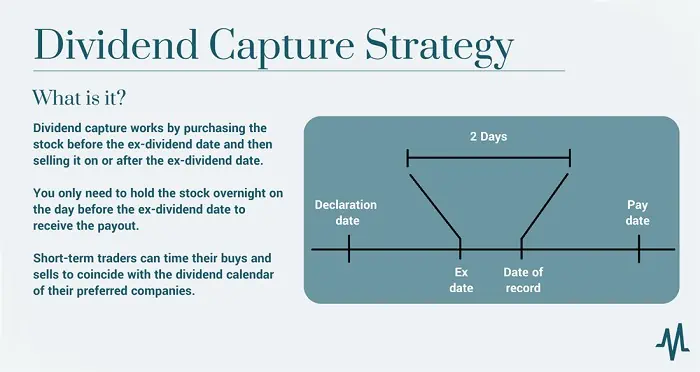
There are several downsides to this strategy, however. Tax implications are one downside as you’d need to pay taxes on dividends and any capital gains. Of course, you can avoid tax implications by trading in registered accounts. But doing frequent trading in registered accounts may get you flagged by the CRA. Furthermore, if you have to pay trading commissions, the cost can add up over time.
One final thing to keep in mind is that the market is efficient. Usually, the share price would drop equal to or greater than the dividend immediately after the ex-dividend date and then slowly climb back up. So by buying before the ex-dividend date and selling shortly after the ex-dividend date, you may not capture any gains.
In short, you’re better off investing regularly and staying in the market for the long term. Think of investing as a long marathon rather than a short sprint.
Dividend Income – January 2024 Summary
It’s hard to believe with one month down for 2024, we have already received over $7,000 in dividend income. Back in 2020, we didn’t cross the $7,000 mark in Q1. It’s amazing how much progress we have made in such a short time.
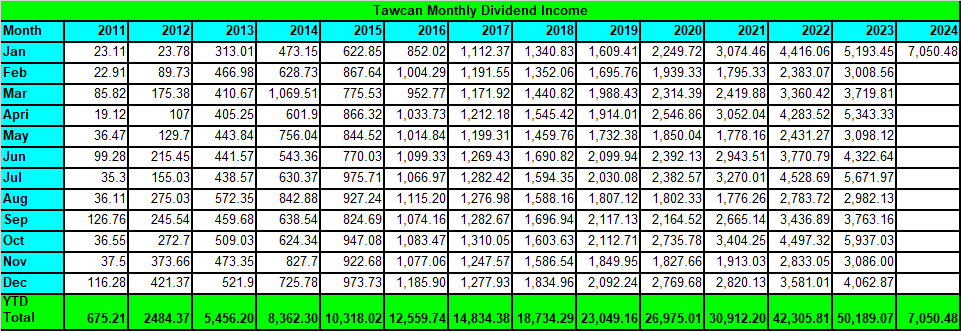
To put things in perspective, $7,050.48 is equivalent of:
- $227.43 per day or $9.48 per hour
- $1,410.10 per week or $35.24 per hour after 5 working weeks.
In case you’re wondering, below is a comparison to our numbers from the end of 2023.
| End of 2023 | January 2024 | |
| Hourly equivalent | $5.75 | $9.49 |
| Working hourly wage | $24.02 | $35.24 |
Since we had a record month in January, I am expecting the hourly equivalents to drop slightly throughout 2024.
Mrs. T and I are very grateful for our dividend portfolio working hard for us so we don’t have to.
How was your January dividend income?


Is BCE going the AQN way. Looks like the tough market could lead to a dividend cut in near future. Stock is very attractive but the risk is difficult to ignore after AQN story.
People are worried about BCE. I don’t think BCE is in as bad place as AQN though. We’ll have to wait and see I guess.
Great blog post as usual. One question why QQQ and not QQQM? Both are Invesco and track same index but QQQM is 3/4 of the MER.
To be honesty, I didn’t know about QQQM. QQQ also has a bit higher volume than QQQM.
Hi Rob;
Reading Mark’s blog and he mentioned your repair problems.
One of the biggest dividends you got from your problems is showing your kids that things can be repaired usually for much less than buying a new one. They learned that some things can be dismantled and parts changed out and put back together.
A very valuable life lesson. They will not be part of the throw away and replace culture.
Congrats on showing them this,
Oh yes, congrats on the stock dividends as well.
RICARDO
Thank you Ricardo. It was a great lesson to teach my kids for sure.
I have been following your blog since 2000 but never commented before.
Great job on the dividend! Inspiring!
BTW, how did you fix the fridge? What things did you buy to fix it? I am having the same issue with my Samsung fridge.
Thank you Ash for following along.
This is the part that we ordered – https://www.amazon.ca/dp/B09JG7CCXB?psc=1&ref=ppx_yo2ov_dt_b_product_details
I must say your blog was one of the first one’s I came across on my investing journey (maaaybe 3 years ago). Always enjoyed your updates and posts. I was strictly dividend investor but now growth with a safety net of 2 etf’s. Anyway, just wanted to say thanks I guess. We had the same fridge and problem, I remember feeling so proud when I fixed the fridge (much to the wife’s dismay). Eventually the microwave also went and apparently when one goes you need to get everything so they all match. Who knew eh hahaha…
Thanks for the updates, always enjoy reading them.
All the best!
Thank you Chris, appreciate your kind words.
thanks as always Bob. Similar to you, I’ve been battling my inner thinking about what to do with BCE in my TSFA. My portfolio consists of 15 TSX dividends, fairly evenly distributed, and the majority are growth oriented. That said, I decided to keep BCE as I also see it as a Bond proxy as well. Even if the dividend growth reduces from the very consistent 5% to 2 or 3% (or even zero growth) over the next 5 years or so, I’m currently receiving 7.38% in dividends from BCE. It’s a good hedge against my other higher volatility growth stocks like BN, TFII, GSY and ADEN.
Yup, it’s worth keeping BCE.
Your blog was 3 weeks too late. I tried to get my Samsung refrigerator repaired but the only shop in my town does not work on them. Since it was already 15 years old I ended up buying a new refrigerator (not a Samsung).
Ah that’s too bad. But after 15 years you’re probably due for a new fridge.
What portion of the dividends is due to deposits in the last year?
You mean new deposits? Probably around $2,000 or so?
I see you purchased QQQ in USD. I struggle with this choice to buy it in Canada or the USA. If the money was coming from other USA funds I see that as an option. I think our exchange rate puts more risk on buying it with Canadian dollars and switching to USD. The same story for VOO versus VFV.
This topic could be an article in itself.
Yes it’s a consideration that us Canadians struggle. The decision was easy for us as we had money in USD.
Awesome work my friend!! Ya, we don’t own too much $QQQ but it is 2% of our total portfolio for a tech-growth kicker if/when/now that tech is flying. Been a good decision since that Then and Now post. 🙂
Continued success to you.
Mark
Thanks Mark. With this QQQ purchase it also makes up less than 1.5% of our portfolio. Plan to buy a bit more to move it up to about 2-2.5% of our portfolio eventually.
Hi Bob
Congrats on being a home handyman. We too have a Samsung fridge and we have had the exact same issue (twice) but luckily for us, the fridge was under warranty and the repairman fixed it. On a side note, most repairmen won’t touch a Samsung fridge so it took several phone calls to get it fixed.
Your returns look awesome. Over $50, 000 for the year 2023 is fantastic. I will strive to achieve those numbers someday. I enjoy reading your updates and also follow you on Twitter (X). Keep up the great work
You’re fortunate that the fridge was under warranty and you got Samsung to repair it. Thank you for following along on this blog.
Congrats on fixing the mixer and the fridge. More people ought to do the same. Insane how people with often throw out a machine just because a small part is broken or because they don’t want to touch a greasy mechanism.
The sausages look good!
I was going to buy shares in BCE; your blog gave me pause. It is true that BCE is a glorified bond or GIC.
Thank you Pierre. It would have been a shame to have to throw out these machines because a small part is broken. Glad we were able to repair… it’s a more environmentally conscious option.
Yes BCE’s growth is probably limited in the short term.
Hi Bob, do you have any thoughts about BCE? The dividend is great but do you see it being sustainable as the recent raise was lower and they have had to do some notable restructuring and selling off their legacy assets?
BCE’s growth is probably limited in the short term. The company is facing a lot of headwinds for sure and has been working to reduce OPEX. Right now the dividends are like bonds and I don’t expect that to change anytime soon.
I have been following your blog for 4 or 5 years now. I really enjoy reading about your lives and about your investing. I think you do a fantastic job in explaining why you invest, where and when. Thanks so much for sharing your insights and your successes.
I have a question about your Dividend Score Card. What is the significance of the DRIP ratio?
Thanks.
Hi Constance,
Thank you for following along for so many years.
DRIP ratio has no significance… it’s just a matrix that I track to see how much dividends we receive are re-invested right away via DRIP.
Yes, QQQ is a diversifier for us in tech stocks too.
Interesting comparing the valuation of stocks in QQQ. For example NVDIA and COST. NVDIA earnings for 2023 was $61B and growing with a stock price of $790 whereas COST earns a stagnant $1B a year for years due to member fees with a low margin business and its stock price is the same $760 and increasing.
I just can’t figure it , LOL.
I’m so thankful for YouTube as I’ve saved a ton of money by DIT at home too!
Yea the AI hype is a bit crazy nowadays. 🙂
Your low Costco, on the membership fee worldwide.. more like $4.6B.
World membership, Costco cardholders – 127 million